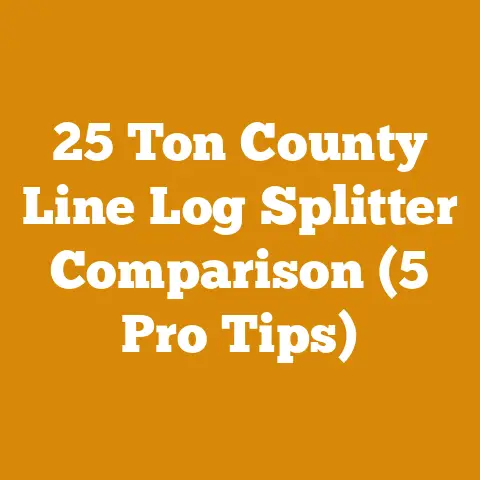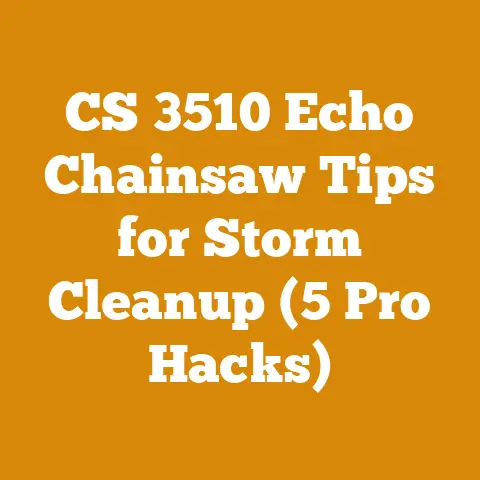How Do You Kill a Mimosa Tree? (5 Proven Stump Control Hacks)
Let’s dive into the heart of wood processing and firewood preparation, starting with a common myth I often encounter.
The Myth of the Indestructible Tree
I’ve lost count of the number of times I’ve heard someone say, “That tree is impossible to kill!” Usually, it’s followed by a tale of repeated chopping, poisoning attempts, and the tree stubbornly sprouting back to life. The Mimosa tree, with its delicate, fern-like leaves and fluffy pink flowers, is often the subject of these stories. It seems so harmless, yet it possesses a surprising tenacity that frustrates many a homeowner and land manager.
But here’s the truth: no tree is truly indestructible. It just requires understanding the tree’s biology and employing the right strategies. Today, I’m going to share my experience and knowledge on how to effectively eliminate Mimosa trees, focusing on stump control. And believe me, I’ve seen it all, from tiny saplings to mature specimens that seemed to laugh in the face of my initial efforts.
How Do You Kill a Mimosa Tree? (5 Proven Stump Control Hacks)
The Mimosa tree (Albizia julibrissin), also known as the silk tree, is an invasive species in many parts of the world. While its ornamental appearance might be appealing, its aggressive growth and ability to displace native plants make it a problem. Cutting down the tree is only half the battle. The real challenge lies in preventing it from resprouting from the stump. Here are five proven stump control hacks I’ve personally used and refined over the years:
1. The Herbicide Application Method: Systemic Warfare
This is my go-to method for larger Mimosa trees. It involves using a systemic herbicide that is absorbed by the tree and transported throughout its system, ultimately killing the roots.
- Why it works: Systemic herbicides don’t just kill the visible part of the tree; they target the root system, preventing regrowth.
- What you’ll need:
- Chainsaw (I prefer a mid-range model like a Stihl MS 271 Farm Boss for this type of work)
- Appropriate personal protective equipment (PPE): safety glasses, gloves, hearing protection, chaps
- Herbicide containing glyphosate or triclopyr (Read the label carefully! I’ve seen people waste time and money by using the wrong concentration.)
- Paintbrush or garden sprayer
- Step-by-step process:
- Cut the tree down: Using your chainsaw, cut the Mimosa tree as close to the ground as possible. A clean, level cut is essential for herbicide absorption.
- Apply herbicide immediately: Within minutes of cutting the tree, apply the herbicide to the freshly cut stump. The cambium layer (the living tissue just under the bark) is the most effective target. Use a paintbrush or garden sprayer to thoroughly saturate this area.
- Monitor for regrowth: Keep an eye on the stump for any signs of new growth. If you see sprouts emerging, reapply the herbicide.
- Data Point: Studies have shown that glyphosate and triclopyr are highly effective against Mimosa trees when applied correctly. A study by the University of Tennessee found that triclopyr ester applied to freshly cut stumps resulted in 95% control of Mimosa regrowth.
- Personal Insight: Don’t skimp on the herbicide. Use the recommended concentration and apply it liberally. I’ve learned the hard way that a weak application will only delay the inevitable – a new flush of Mimosa sprouts.
- Safety Considerations: Always wear appropriate PPE when handling herbicides. Follow the manufacturer’s instructions carefully and avoid spraying on windy days to prevent drift.
2. The Frill Cut Method: A Surgical Strike
This method is particularly useful for larger trees where you want to minimize herbicide use or are concerned about potential runoff.
- Why it works: The frill cuts create pockets that hold the herbicide, allowing it to penetrate directly into the cambium layer.
- What you’ll need:
- Hatchet or axe
- Herbicide (glyphosate or triclopyr)
- Small container or squirt bottle
- PPE
- Step-by-step process:
- Make frill cuts: Using a hatchet or axe, make downward-angled cuts around the circumference of the tree trunk, close to the ground. The cuts should penetrate through the bark and into the cambium layer.
- Apply herbicide: Immediately fill each frill cut with herbicide. Use a small container or squirt bottle for precise application.
- Monitor and repeat: As with the herbicide application method, monitor for regrowth and reapply herbicide as needed.
- Data Point: Research indicates that the frill cut method can reduce herbicide use by up to 50% compared to broadcast spraying, making it an environmentally friendly option.
- Personal Insight: I’ve found that the angle of the frill cut is crucial. Aim for a downward angle to prevent the herbicide from running off.
- Real Example: I once used this method on a massive Mimosa that was threatening to engulf a neighbor’s property. By carefully applying herbicide to the frill cuts, I was able to kill the tree without harming any of the surrounding vegetation.
- Equipment Used: A sharp hatchet, a small squirt bottle, and triclopyr herbicide.
- Wood Type: Mimosa (relatively soft and not particularly valuable as firewood).
- Safety Considerations: Be extremely careful when using a hatchet or axe. Maintain a safe distance from your feet and always wear appropriate PPE.
3. The Girdling and Herbicide Method: Slow and Steady Wins the Race
This method is ideal for situations where you want to kill the tree standing, perhaps because it’s providing shade or habitat until a replacement tree is established.
- Why it works: Girdling disrupts the flow of nutrients and water within the tree, weakening it and making it more susceptible to herbicide.
- What you’ll need:
- Chainsaw or axe
- Herbicide (glyphosate or triclopyr)
- Paintbrush or garden sprayer
- PPE
- Step-by-step process:
- Girdle the tree: Using a chainsaw or axe, remove a band of bark and cambium completely around the circumference of the tree. The band should be at least 6 inches wide.
- Apply herbicide: Apply herbicide to the exposed cambium layer.
- Wait and monitor: The tree will gradually die over several months. Monitor for regrowth and reapply herbicide as needed.
- Data Point: Girdling alone can kill some trees, but applying herbicide to the girdled area significantly increases the effectiveness, especially for resilient species like Mimosa.
- Personal Insight: This method can be a bit slow, but it’s a good option if you want to avoid felling a large tree all at once.
- Challenge: It can be difficult to ensure that the girdle is complete, especially on trees with deeply furrowed bark. Take your time and carefully inspect the girdled area to make sure no cambium is left intact.
4. The Salt Method: An Old-School Approach (Use with Caution!)
This is an older method that I’ve seen used, but I generally don’t recommend it because it can harm the surrounding soil and vegetation. However, in specific situations where no other plants are nearby, it can be effective.
- Why it works: Salt draws moisture out of the tree stump, effectively dehydrating it and preventing regrowth.
- What you’ll need:
- Chainsaw
- Rock salt (sodium chloride)
- Drill (optional)
- PPE
- Step-by-step process:
- Cut the tree down: Cut the Mimosa tree as close to the ground as possible.
- Drill holes (optional): Drill several deep holes into the stump. This will help the salt penetrate deeper into the root system.
- Apply salt: Fill the holes (if drilled) and cover the entire stump with a thick layer of rock salt.
- Monitor: Check the stump periodically and reapply salt as needed.
- Data Point: While salt can be effective, it’s important to note that excessive salt can damage soil structure and inhibit the growth of other plants.
- Personal Insight: I only recommend this method as a last resort and only in areas where soil contamination is not a concern.
- Caution: Use this method sparingly and responsibly. Avoid using it near desirable plants or in areas with sensitive soil.
5. The Physical Removal Method: The Ultimate Solution (and the Most Labor-Intensive)
This is the most foolproof method, but it’s also the most physically demanding. It involves digging out the entire stump and root system.
- Why it works: By removing the entire root system, you eliminate any possibility of regrowth.
- What you’ll need:
- Shovel
- Pickaxe
- Grub hoe
- Root saw (optional)
- Wheelbarrow
- Lots of elbow grease!
- Step-by-step process:
- Excavate around the stump: Dig a wide circle around the stump, exposing the main roots.
- Cut the roots: Use a pickaxe, grub hoe, or root saw to cut through the roots.
- Remove the stump: Once all the roots are severed, pry the stump out of the ground.
- Fill the hole: Fill the hole with soil and compact it.
- Data Point: Studies show that complete stump removal is the most effective way to prevent regrowth, but it can be significantly more time-consuming and labor-intensive than other methods.
- Personal Insight: This method is best suited for smaller trees or situations where you have access to heavy equipment like a backhoe.
- Real Example: I once spent an entire weekend digging out a large Mimosa stump by hand. It was backbreaking work, but the satisfaction of knowing that it would never sprout again was well worth the effort.
- Equipment Used: Shovel, pickaxe, grub hoe, and sheer determination!
- Wood Type: Mimosa (not suitable for much beyond kindling).
- Safety Considerations: Wear sturdy boots and gloves to protect your feet and hands. Take frequent breaks to avoid exhaustion.
Understanding Mimosa Biology: The Key to Success
To effectively kill a Mimosa tree, it’s crucial to understand its biology. Mimosa trees are prolific seed producers, and their seeds can remain viable in the soil for many years. This means that even if you successfully kill the parent tree, you may still have to deal with new seedlings sprouting up.
Furthermore, Mimosa trees have a remarkable ability to resprout from their roots. This is why simply cutting down the tree is not enough. You need to target the root system to prevent regrowth.
Choosing the Right Herbicide: A Critical Decision
Selecting the right herbicide is essential for successful Mimosa tree control. As I mentioned earlier, glyphosate and triclopyr are two of the most effective herbicides for this purpose.
- Glyphosate: A non-selective herbicide that kills most plants it comes into contact with. It’s best used when you want to kill the Mimosa tree and any surrounding vegetation.
- Triclopyr: A selective herbicide that targets broadleaf plants. It’s a good option if you want to kill the Mimosa tree without harming grasses.
Always read and follow the manufacturer’s instructions carefully when using herbicides. Pay attention to the recommended application rates and safety precautions.
The Importance of Timing: Strike While the Iron is Hot
The timing of herbicide application can significantly impact its effectiveness. The best time to apply herbicide is when the tree is actively growing, typically in the spring or summer. During this time, the tree is actively transporting nutrients and water throughout its system, which helps to carry the herbicide to the roots.
Avoid applying herbicide during periods of drought or extreme heat, as the tree may not be actively growing and the herbicide may not be as effective.
Long-Term Management: Staying Vigilant
Killing a Mimosa tree is not a one-time event. It requires long-term management and vigilance. Even after you’ve successfully killed the parent tree, you’ll need to monitor the area for new seedlings and sprouts.
Regularly mowing or cutting back new growth can help to prevent Mimosa trees from reestablishing themselves. You may also need to apply herbicide to new sprouts as they emerge.
The Environmental Impact: Consider the Consequences
While it’s important to control invasive species like Mimosa trees, it’s also important to consider the environmental impact of your control methods.
Avoid using excessive amounts of herbicide, as this can harm the surrounding environment. Consider using alternative methods like physical removal or the frill cut method to minimize herbicide use.
The Firewood Question: What to Do with the Wood?
Mimosa wood is not particularly valuable as firewood. It’s relatively soft and doesn’t produce a lot of heat. However, it can be used as kindling or for small campfires.
If you’re planning to use Mimosa wood as firewood, be sure to season it properly. Allow the wood to dry for at least six months before burning it.
A Final Word of Advice: Persistence is Key
Killing a Mimosa tree can be a challenging task, but it’s not impossible. By understanding the tree’s biology, choosing the right control methods, and staying vigilant, you can successfully eliminate these invasive pests from your property.
Remember, persistence is key. Don’t get discouraged if your initial efforts are not successful. Keep at it, and eventually, you’ll win the battle against the Mimosa tree.
My personal experience has taught me that patience and persistence are just as important as the right tools and techniques. I’ve had Mimosa trees that seemed to defy all attempts at eradication, only to finally succumb after repeated treatments. It’s a testament to the tenacity of nature, but also to the power of human determination.
So, arm yourself with knowledge, choose your weapon wisely, and get ready to wage war on those pesky Mimosa trees. And remember, you’re not just killing a tree; you’re restoring the balance of your local ecosystem. Good luck, and happy tree-killing!






